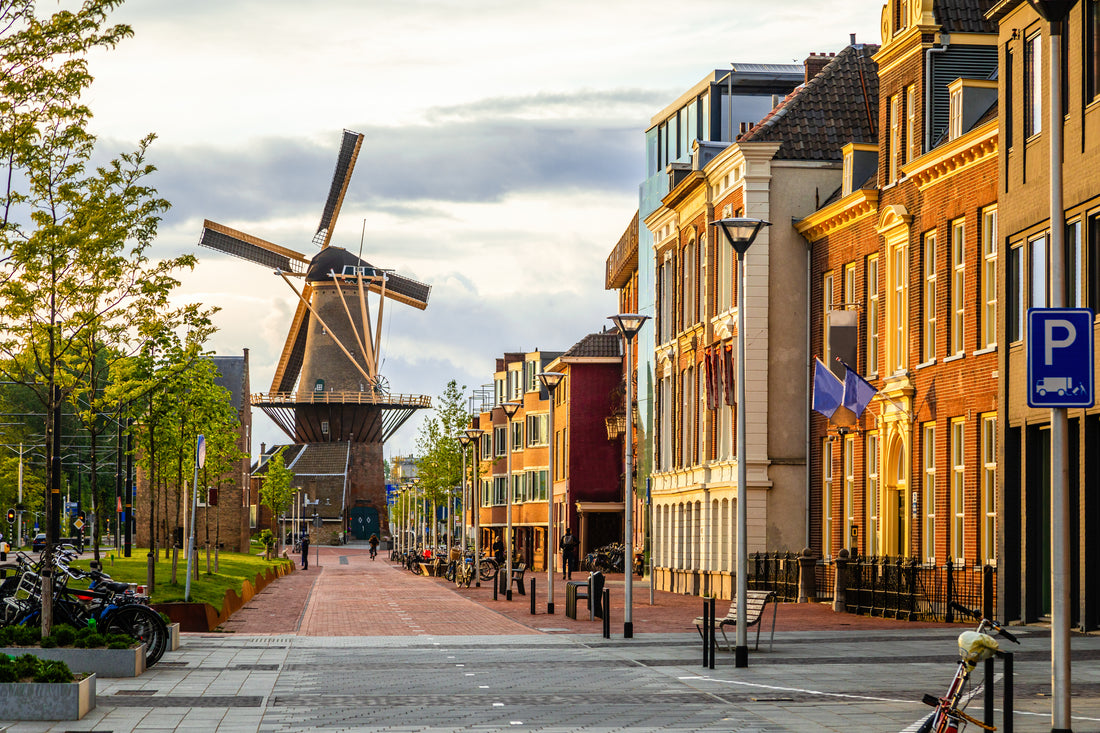The Lasting Impact of Molen de Roos on the Dutch Golden Age and Its Resurgence in Modern Kitchen Art
Introduction
The Dutch Golden Age, a landmark period in the 17th century, marked the zenith of economic, cultural, and technological achievements for the Netherlands. During this time, Molen de Roos, a distinguished windmill in Delft, was not merely a structure grinding grains; it was an emblem of Dutch progress and a hub of community activity. Remarkably, the legacy of Molen de Roos continues to thrive today, notably inspiring products like Woody Buddy’s Delft Molen de Roos Cutting Board—a masterful blend of history and modern kitchen accessories.
Deepening Economic Contributions
Vital Role in Agriculture and Grain Trade
Molen de Roos was not just another windmill; it was a pivotal component of Delft's economic engine during the Dutch Golden Age. Its ability to produce large amounts of flour efficiently made it a cornerstone in both local and international grain markets. The prominence of Molen de Roos extended beyond Delft, playing a role in sustaining the Dutch Republic's booming economy.
Diversification and Adaptability
Molen de Roos was part of a larger ecosystem of windmills that were the bedrock of various industries from textile production to drainage projects. Its multi-faceted role makes it an epitome of Dutch ingenuity in leveraging wind power for multiple applications.

Technological Innovations: A Closer Look
Advanced Mechanisms
During the Golden Age, the technology behind windmills like Molen de Roos underwent extensive refinement. Upgrades in windblade design and mechanical systems made these mills far more efficient, directly contributing to the economic prosperity of the period.
Pioneering Sustainability
Even back in the 17th century, windmills like Molen de Roos were a testament to sustainable energy usage. Their functionality based on wind power set a precedent for renewable energy solutions, a topic of great importance today.
Cultural Importance: Beyond a Simple Structure
An Artistic Muse
The aesthetic and symbolic importance of Molen de Roos extended to the art world. Artists such as Vermeer and Rembrandt were inspired by these iconic structures, immortalizing them in their paintings as symbols of Dutch prosperity.
As a Social Hub
Molen de Roos served as more than an industrial site; it was a centerpiece of social interaction in Delft. It was a gathering point where commerce, news, and social exchanges intertwined, making it a microcosm of Dutch Golden Age society.

Delft Molen de Roos Cutting Board
The Legacy Reimagined: Delft Molen de Roos Cutting Board by Woody Buddy
Today, the essence of Molen de Roos is elegantly captured in the Delft Molen de Roos Cutting Board by Woody Buddy. This laser-engraved cutting board serves as a tribute to this historic windmill, fusing Dutch heritage with contemporary kitchen accessories. The handcrafted city design cutting board is not only a functional kitchen tool but also a conversation piece that harks back to a monumental era, making it an ideal housewarming gift and a fitting addition to any kitchen.
Conclusion
Molen de Roos is much more than a historical monument; it’s a living narrative of Dutch resilience, innovation, and cultural richness. Its legacy is beautifully extended into modern-day kitchens through Woody Buddy’s art cutting boards, allowing a new generation to appreciate this remarkable piece of history while enjoying a functional, aesthetically pleasing kitchen accessory.

